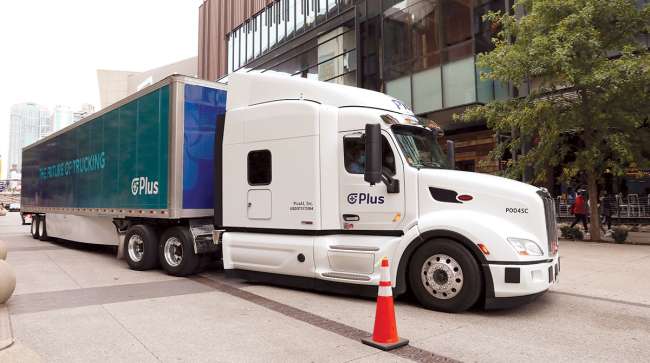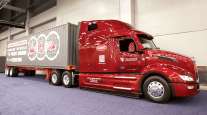Senior Reporter
ATA Presses USDOT for AV Industry Guidance

[Stay on top of transportation news: Get TTNews in your inbox.]
Facilitating the deployment of autonomous vehicle technologies in trucking is among the policies American Trucking Associations called on the U.S. Department of Transportation to adopt.
As part of the department’s aim to update its near-term strategic guidance, ATA renewed calls for USDOT officials to pursue policies designed to realize the nationwide deployment of autonomous technologies for the industry.
“Automated trucks present the next transformative opportunity to promote safety, improve the efficiency of freight movement and the U.S. logistics system, and maintain U.S. competitiveness in innovative automotive and mobility technologies,” ATA emphasized last month in its letter to USDOT. The department recently sought input from transportation stakeholders.
American Trucking Associations letter to U.S. Department of Transportation by Transport Topics on Scribd
ATA continued, “The trucking industry relies on interstate highways to facilitate the free flow of goods between states. Accordingly, it is important that state and local laws do not create disparities that slow the adoption of these safety and productivity-boosting technologies. A clear process and standards-setting role for the federal government that precludes state efforts to regulate vehicle design is a key component of this pathway to commercialization.”
Specifically, ATA recommended collaboration with agency officials to establish performance-based standards meant to produce quantifiable outcomes. “Industry best practices can provide a vital technical basis to assist DOT in evolution of a regulatory framework,” ATA said. “Requiring [autonomous vehicles] to meet a certain level of safety, rather than use any specific technology, can focus regulations on managing risk within specific operating environments.”
Additionally, ATA highlighted potential benefits that would stem from federal programs, such as the National Highway Traffic Safety Administration’s voluntary safety self-assessment, which relies on industry feedback. “Stakeholder engagement must be central to the department’s strategic plan. Especially as DOT implements the programs and requirements of the [$1 trillion] Infrastructure Investment and Jobs Act, we note that partnerships and collaboration with industry will be crucial to advance productivity-boosting and lifesaving AV technologies,” ATA noted.
Policy rulemakings on the federation’s radar include the Federal Motor Carrier Safety Administration’s “Safe Integration of ADS-Equipped CMVs,” as well as NHTSA’s “Framework for Automated Driving Systems Safety.”

In this special 2021 Roundabout episode, host Mike Freeze looks back at how trucking not only worked to recover from the effects of the pandemic, but also improve through the darkest of times. Hear a snippet above, and get the full program by going to RoadSigns.TTNews.com.
On other policy matters, ATA recommended the department further invest in congestion-mitigation programs. Such investments should target critical freight corridors as a way to improve the efficient flow of goods. Maintenance and modernization of connectivity points, especially along the supply chain, should be prioritized. Of note, ATA added: “We advise against federal policies that are likely to prevent or hamstring state and local agencies’ efforts to expand highway capacity. This includes conditioning the expenditure of federal funds for new capacity on a showing that alternatives, such as operational strategies or investment in alternative transportation modes, are definitively ruled out.”
Regarding electric vehicles, ATA proposed the Biden administration provide guidance for states and cities to deploy such vehicles and establish standards for charging stations across a national network. ATA also called on the administration to assemble a group that reflects well-diversified stakeholders to pursue policies for a transition to electric vehicles.
On fuel-emissions policy, ATA requested DOT engage with the industry to ensure a transition toward the next generation of lower-carbon-emitting technologies remains affordable. Also, such a transition should be properly tested, include sufficient fueling infrastructure and consider trucking needs.
For its strategic plan, USDOT sought input from stakeholders and the public. A draft of the department’s plan emphasized near- and long-term objectives to “invest in our transportation system to provide American workers and businesses reliable and efficient access to good-paying jobs, resources, and markets.”
Objectives include safety, economic growth, equity, climate and sustainability, and organizational excellence. The department noted its plan would aim to “strengthen our world-class organization.” Additionally, it would “advance the department’s mission by establishing policies, processes, and an inclusive and innovative culture to effectively serve communities and responsibly steward the public’s resources.”
Want more news? Listen to today's daily briefing below or go here for more info:




